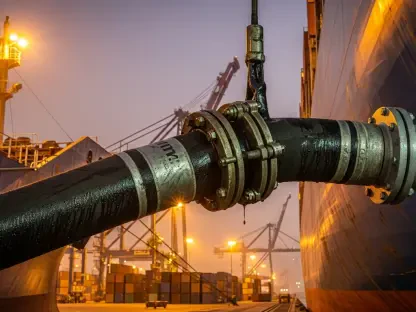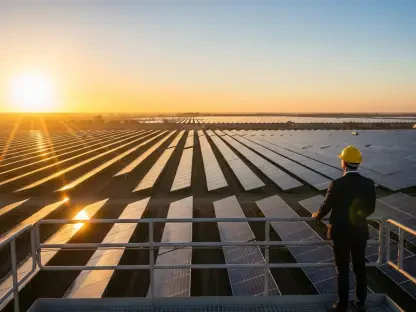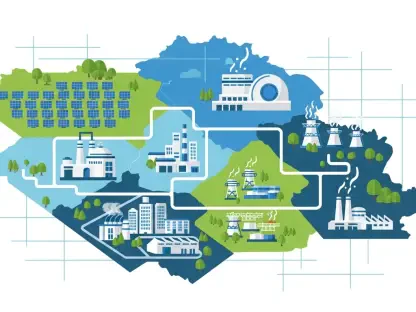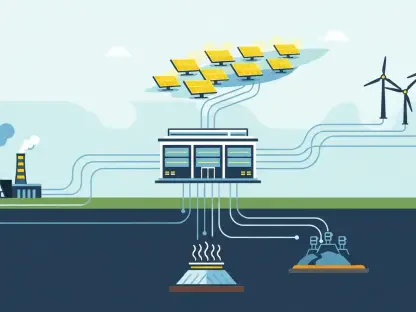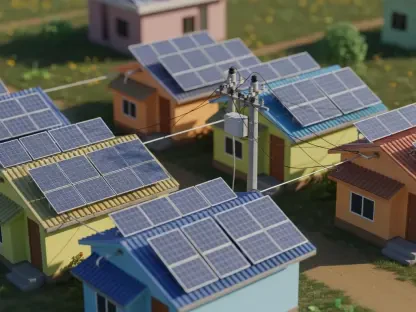Welcome to an insightful conversation on the future of sustainable aviation fuel (SAF) with Christopher Hailstone, a renowned expert in energy management, renewable energy, and electricity delivery. With his deep knowledge of grid reliability and utilities, Christopher brings a unique perspective to the exciting partnership between Airbus’s Singapore office and Indonesia’s Bogor Agricultural University (IPB). Together, they’re working to develop biomass-based jet fuel, tapping into Indonesia’s vast potential to produce up to 500 million tonnes of biomass annually. In this interview, we dive into the origins and goals of this collaboration, the promise and challenges of biomass as a fuel source, the environmental concerns at play, and the innovative strategies being explored to make SAF a reality. Let’s explore how this project could transform aviation and sustainability.
How did the partnership between Airbus’s Singapore office and Bogor Agricultural University come about, and what sparked this collaboration?
Well, Silvia, this partnership really stems from a shared vision to tackle the aviation industry’s carbon footprint. Airbus, being a global leader in aerospace, has been actively seeking sustainable fuel alternatives, and their Singapore office identified Southeast Asia as a region with immense potential for biomass production. Indonesia, in particular, stood out due to its agricultural abundance. Bogor Agricultural University, known for its cutting-edge research in bioenergy, was a natural fit as a partner. The collaboration was born out of discussions on how to leverage Indonesia’s resources and academic expertise to innovate in sustainable aviation fuel. It’s about combining industry know-how with local knowledge to create something transformative.
What are the primary goals of this initiative, and what do you hope to achieve in the long term?
The main goal is to develop a scalable, reliable source of sustainable aviation fuel from biomass, with Indonesia potentially supplying up to 100 million tonnes annually in the near future. We’re looking at reducing the aviation sector’s reliance on fossil fuels and cutting emissions significantly. Long term, the hope is to establish Indonesia as a global hub for SAF production, proving that biomass can be a viable, mainstream alternative. Beyond that, it’s about creating a blueprint for other regions to follow—showing how agricultural economies can contribute to green energy solutions while boosting local industries.
Can you explain what biomass is and why it’s seen as a promising option for sustainable aviation fuel?
Absolutely. Biomass refers to organic materials—think crop residues, wood, or other plant-based stuff—that can be converted into energy. In the context of aviation fuel, we’re talking about turning these materials into biofuels that can power aircraft. It’s promising because it’s renewable; unlike fossil fuels, biomass can be replenished through agriculture. Plus, it has the potential to lower carbon emissions if managed correctly, since the carbon released during combustion is offset by the carbon absorbed during plant growth. It’s also abundant in places like Indonesia, where agricultural byproducts are often underutilized, making it a practical choice for scaling up SAF production.
What specific types of biomass materials are being prioritized in Indonesia for this project?
In Indonesia, we’re focusing on materials like palm fruit bunches, which are plentiful in regions like Sumatra and Kalimantan, and rice straw, especially in Java. These are often seen as waste—either left to rot or burned—so repurposing them into fuel makes sense both economically and environmentally. The idea is to tap into resources that are already available in massive quantities without competing with food production, which is a concern with other SAF sources like cooking oil.
How does biomass stack up against other sustainable aviation fuel sources, such as used cooking oil or waste palm oil?
Biomass has some distinct advantages, but it also comes with unique challenges. Compared to used cooking oil or waste palm oil, biomass offers a much larger potential supply. For instance, cooking oil-based SAF is limited because it competes with food needs, and there’s only so much waste oil to go around. Biomass, on the other hand, can be sourced from a wider range of materials that aren’t tied to food security. However, processing biomass into aviation-grade fuel is more complex and less developed than oil-based methods. It requires more research and investment in technology, but the payoff could be huge given the sheer volume available.
What are some of the biggest hurdles in collecting and processing biomass for aviation fuel in a country like Indonesia?
One of the biggest hurdles is logistics. Indonesia’s landscape is incredibly diverse, and a lot of biomass comes from small-scale farmers in remote areas with poor infrastructure. Getting that material from rural fields to processing facilities is a nightmare—roads aren’t always reliable, and coordination is tough. Then there’s the processing itself; turning raw biomass into high-quality jet fuel isn’t straightforward. The technology exists, but scaling it up to handle millions of tonnes annually is uncharted territory. On top of that, regulatory frameworks aren’t fully in place to support this kind of industry, so there are policy gaps to address as well.
How is the partnership addressing environmental concerns, especially around deforestation and habitat loss for species like orangutans?
Environmental sustainability is a core focus of this project. We’re very aware of the risks, like deforestation, that have been flagged by environmental groups. The partnership is committed to using existing agricultural residues rather than encouraging new land clearing. That means focusing on waste products like palm fruit bunches or rice straw instead of expanding plantations into forested areas. We’re also working on guidelines to ensure that biomass sourcing doesn’t harm critical habitats. It’s about striking a balance—meeting fuel demands while protecting Indonesia’s incredible biodiversity. Collaboration with local communities and environmental organizations is key to getting this right.
Can you walk us through the detailed study being conducted on Indonesia’s biomass potential and what it aims to uncover?
The study is a deep dive into how much biomass Indonesia can realistically produce and how to get it from field to fuel efficiently. It’s looking at resource availability—mapping out where materials like palm residues or rice straw are most abundant. Then there’s the supply chain piece: figuring out logistics, transport routes, and storage solutions to minimize costs and emissions. We’re also analyzing where to place processing facilities to keep everything streamlined. The goal is to create a comprehensive roadmap that shows exactly how Indonesia can become a powerhouse for SAF production while addressing practical and environmental challenges.
What is your forecast for the future of sustainable aviation fuel, particularly with biomass as a key resource?
I’m optimistic, Silvia. I think biomass has the potential to be a game-changer for sustainable aviation fuel, especially in regions like Indonesia with vast agricultural resources. By 2030, I expect we’ll see SAF making up a significant portion of aviation fuel blends, with biomass playing a leading role as technologies mature and scale. The key will be overcoming current barriers—logistics, processing, and regulations—and ensuring environmental safeguards are in place. If we get this right, SAF could redefine how the aviation industry approaches sustainability, paving the way for a greener future. I believe we’re on the cusp of a major shift, and projects like this one are laying the groundwork.


